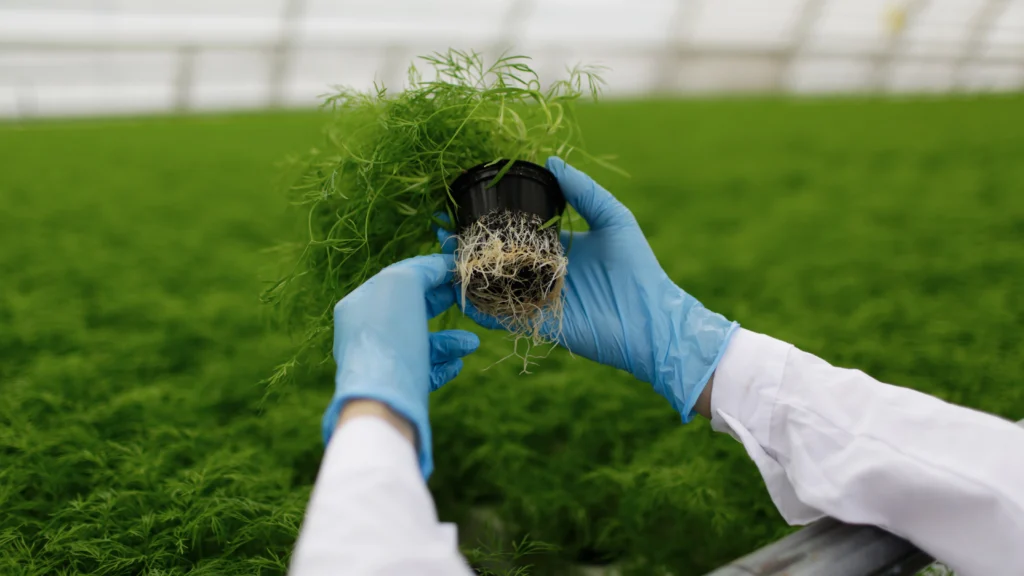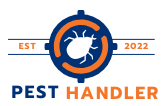Contents Guide
- 1 The Principles of IPM: Prevention, Monitoring, and Control
- 2 Benefits of IPM: Environmental, Economic, and Health
- 3 3. Health Benefits
- 4 Implementing IPM in Agriculture: Case Studies and Best Practices
- 5 IPM in Home Gardening: Practical Tips and Strategies
- 6 The Role of Technology in IPM: Innovations and Tools
- 7 Challenges and Future of IPM
- 8 Why Choosing IPM is Key to a Sustainable Future?
- 9 Conclusion
- 10 FAQ's
Integrated Pest Management (IPM) is an environmentally friendly approach to pest control that combines various strategies to manage pests in a sustainable and effective manner. Unlike traditional chemical pesticides, IPM emphasizes prevention, monitoring, and the use of biological, cultural, and mechanical control methods.
The goal is to reduce the need for chemical interventions while protecting the ecosystem, human health, and beneficial organisms like pollinators. Studies show that IPM can significantly reduce pesticide use and the associated risks. For instance, research from the U.S. Environmental Protection Agency (EPA) found that IPM programs resulted in a 50-90% reduction in pesticide applications on crops.
This approach not only enhances sustainability but also contributes to long-term agricultural productivity and safety. This guide will walk you through everything you need to know—from the principles of IPM to its practical applications and future potential.
The Principles of IPM: Prevention, Monitoring, and Control
At its core, IPM is not just a pest control strategy; it’s a philosophy that promotes long-term, sustainable solutions over short-term fixes.
1. Prevention
Prevention serves as the initial step in IPM to keep pests at bay. By proactively discouraging pest infestations, you can often avoid the need for chemical interventions altogether.
- Crop rotation in agriculture minimizes the buildup of pests that favor specific crops.
- Planting pest-resistant varieties is another effective preventative tactic.
- Maintaining proper sanitation in fields or gardens eliminates conditions that encourage pest breeding, making it an essential aspect of pest control for gardens.
2. Monitoring
Rather than applying pesticides as a blanket solution, IPM emphasizes regular monitoring to detect pest activity.
- Farmers can use traps, sticky cards, or field scouting to assess population levels.
- For home gardeners, frequent inspections of plants for signs of damage (like chewed leaves or wilted stems) can help catch issues early.
3. Control
Control measures under IPM utilize a tiered approach, starting with methods that pose the least risk to humans and the environment.
- Biological Control involves introducing natural pest control predators such as ladybugs to manage aphids.
- Mechanical Control includes removing weeds by hand, setting barriers, or using traps.
- When absolutely necessary, chemical control—application of pesticides—is done judiciously and as a last resort, often targeting specific pests to reduce collateral damage.
Benefits of IPM: Environmental, Economic, and Health
1. Environmental Benefits
One of the greatest advantages of Integrated Pest Management is its commitment to reducing chemical pesticide usage.
- IPM helps safeguard pollinators like bees, which are vital to ecosystems.
- It minimizes water and soil contamination, keeping vital resources clean for future generations.
2. Economic Benefits
For farmers, input costs matter. IPM offers ways to save without sacrificing productivity.
- Techniques like targeted pest control reduce the need for blanket pesticide applications, saving money.
- Healthier soil, thanks to reduced chemical usage, translates to better crop yields over time.
3. Health Benefits
Less reliance on chemical pesticides minimizes exposure risks for both consumers and those handling crops, promoting safer working environments and healthier food systems. By reducing chemical residues in food, IPM ensures that consumers enjoy safer produce with fewer health concerns.
Additionally, farmworkers benefit from reduced pesticide exposure, lowering the risk of long-term health issues such as respiratory problems or skin conditions. This shift towards sustainable practices, including various types of pest control in agriculture, also supports a healthier ecosystem, leading to more robust agricultural production and improved public health over time.
Implementing IPM in Agriculture: Case Studies and Best Practices
IPM shines in agricultural landscapes where balance and scalability are key. Below are real-world IPM examples that showcase its power.
- California Almond Farms combat spider mites by releasing predatory mites and strategically reducing water stress in trees to discourage infestations.
- Rice Farmers in Southeast Asia adopt IPM strategies by introducing natural predators (like certain fish species) and optimizing crop planting cycles.
Best Practices for Farmers
- Use weather-based prediction models to anticipate pest outbreaks.
- Rotate crops to break pest life cycles.
- Combine pest control with beneficial habitat creation—for instance, planting wildflowers to attract pollinators and predators.
IPM in Home Gardening: Practical Tips and Strategies
While much of the focus on IPM rests in large-scale applications, its principles are easily adapted to home gardening.
Tips for Home Gardeners
- Plant diversity goes a long way in keeping pests under control; some plants can act as natural repellents.
- Apply a layer of mulch to deprive weeds of sunlight and prevent them from competing with desired plants.
- Use organic pest control sprays made of ingredients like neem oil or garlic as safer alternatives to synthetic insecticides.
Home-based IPM is not only manageable but also encourages healthier and more vibrant gardens.

The Role of Technology in IPM: Innovations and Tools
Digital tools, like precision agriculture solutions utilizing drones, enable faster and more accurate pest monitoring on farms. Sensors can track soil health and pest activity in real-time.
Emerging AI technologies analyze historical pest data and weather patterns to predict potential outbreaks, giving farmers a valuable head start in implementing IPM strategies.
With advancements in biotechnology, biopesticides made from natural materials like bacteria or plant-derived oils are increasingly effective and environmentally safe options within an IPM framework.
Challenges and Future of IPM
While the benefits of IPM are clear, it’s not without hurdles.
- Lack of education among farmers and gardeners about IPM strategies can limit adoption.
- Initial investments in monitoring tools and training may deter smaller-scale users.
The Future of IPM
The future is bright for Integrated Pest Management as the demand for sustainable practices grows. Governments worldwide are recognizing IPM’s potential, incorporating funding and education to encourage adoption.
Additionally, IPM in urban settings, from managing pests in public parks to controlling rodents in cities, shows great promise when combined with ongoing innovations like AI.
Why Choosing IPM is Key to a Sustainable Future?
Integrated Pest Management embodies the principle that working with nature, rather than against it, yields better long-term results. Farmers, gardeners, and businesses alike can benefit from its thoughtful and balanced approach to pest control.
With the health of the planet—and our own communities—at stake, adopting strategies like IPM isn’t just practical; it’s essential. Whether you’re eyeing innovation or a low-tech start, the shift toward sustainable, eco-friendly practices begins with a choice.
Conclusion
Integrated Pest Management (IPM) offers a sustainable, eco-friendly approach to pest control that minimizes the use of chemicals while protecting both human health and the environment. By focusing on prevention, monitoring, and judicious control, IPM reduces pesticide reliance and fosters long-term agricultural and ecological benefits.
Whether in large-scale agriculture or home gardening, IPM provides effective solutions that balance pest control with environmental stewardship. As technology and awareness continue to grow, IPM’s potential to create safer, healthier food systems and ecosystems is promising. Adopting IPM practices is not just a choice for today, but a commitment to a sustainable and healthier future.
FAQ's
Integrated Pest Management in entomology revolves around the control of insect pests using biological, mechanical, cultural, and chemical methods in harmony to reduce pest populations sustainably.
Absolutely! A common IPM example is using ladybugs to control aphids in apple orchards. Another involves incorporating crop rotation to prevent soil-borne pests.
The benefits include reduced chemical usage, improved economic sustainability, lower environmental impact, and safer conditions for workers and consumers alike.
Not at all! IPM is widely applied beyond agriculture—home gardens, schools, urban parks, and even industrial settings benefit from its principles.
Check for labels like "Certified Organic" or look for information about sustainable farming practices on the product or farm’s website.



 Pest Contol Basics
Pest Contol Basics